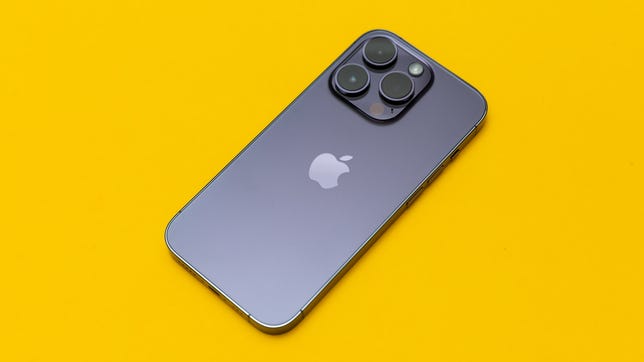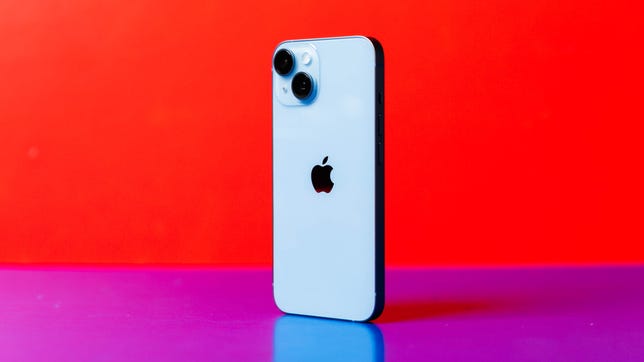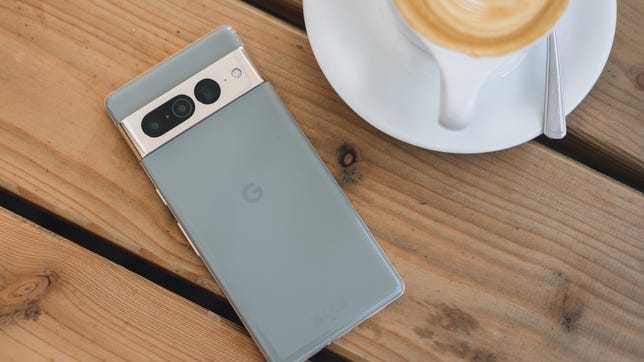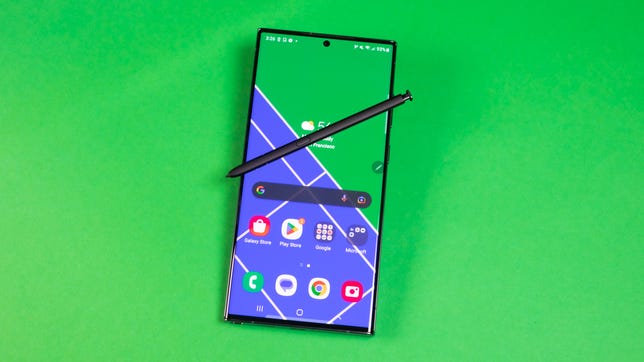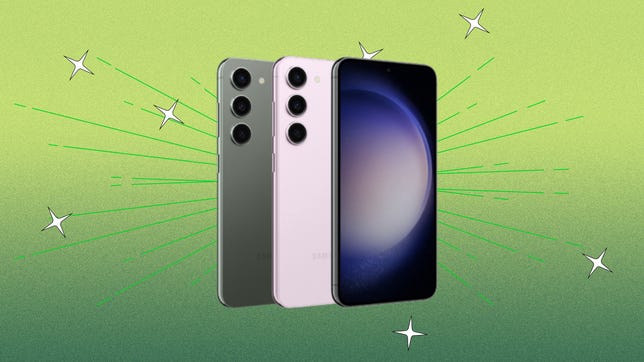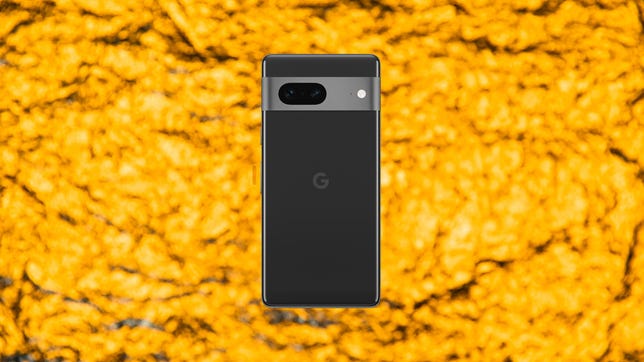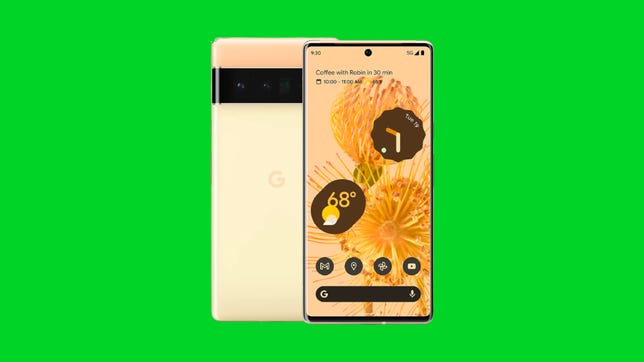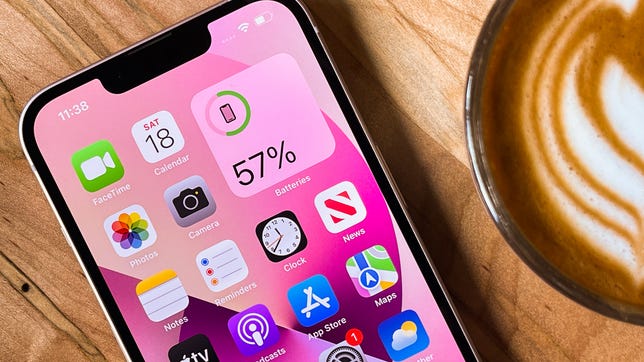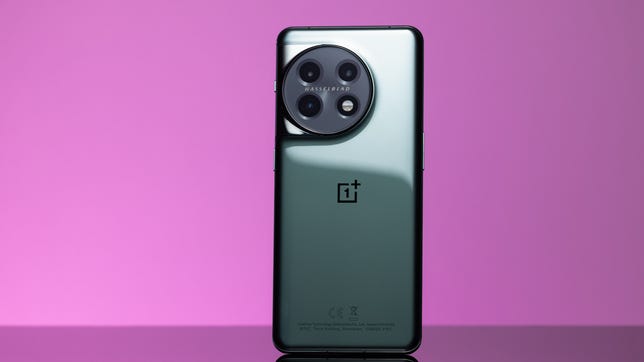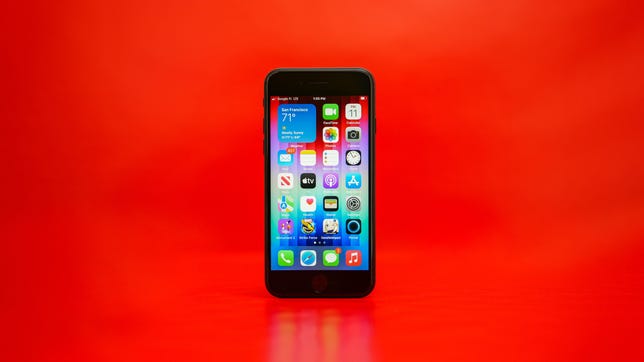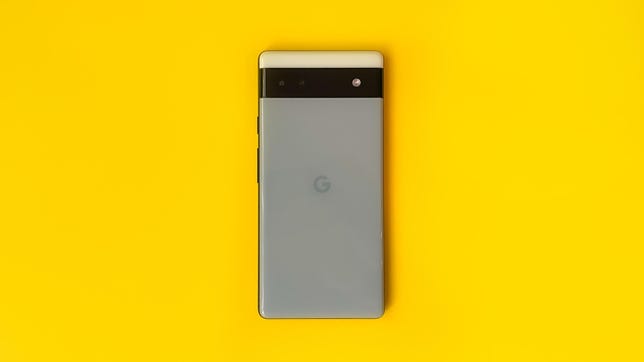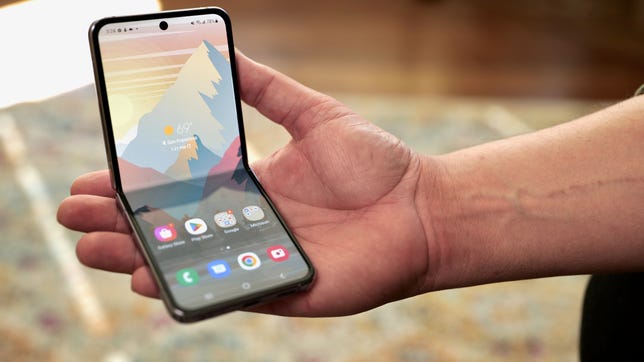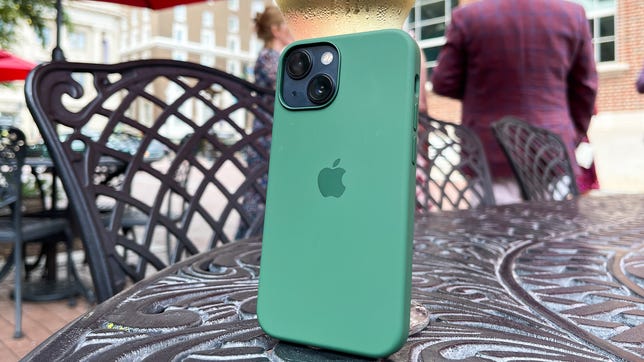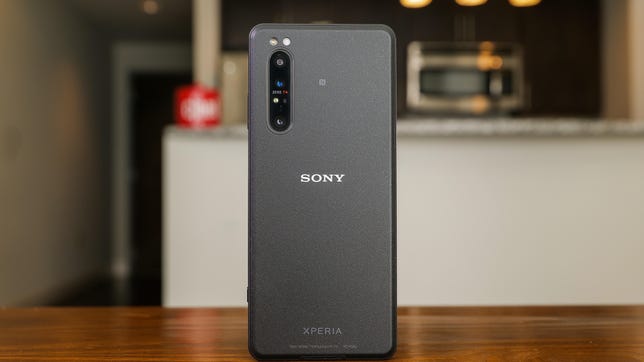Technologies
Whatever Your Budget, These Are the Best Phones of 2023
Our top phones for this year, hand-picked and thoroughly reviewed by CNET editors.

This story is part of Gift Guide, our year-round collection of the best gift ideas.
In this article:
The best phones of 2023 come in different sizes and at varying prices, but they have several things in common. From impressive cameras to fast processors and vibrant displays, each phone on this list meets the requirements for what CNET considers to be a quality smartphone.
But with so many options, deciding which one’s right for you isn’t always easy. To simplify the decision, we’ve rounded up our top picks. From flagship phones to budget phones under $500 and everything in between, there are plenty of worthwhile options.
Every phone on this list has been thoroughly reviewed and tested, and you’ll find options across iPhone and Android that fit different needs.
What is the best phone for most people?
The Apple iPhone 14 and 14 Pro impressed us with excellent performance from their processors and the cameras. But if you aren’t after the best iPhone around, you still have plenty of smartphone choices, including the Pixel 7 Pro and the Samsung Galaxy S23 Ultra. They both offer everything you could want, from high-end performance to superb cameras.
Those who want something cheaper should consider the $599 Pixel 7, while the Galaxy S23 may be more suitable for people who prefer smaller phones.
There are a number of other great smartphones with eye-catching features, such as Samsung’s new Galaxy Z Fold 4, which has a foldable screen. These can be quite expensive, but if your cash doesn’t stretch that far, worry not. More and more affordable phones, such as the new Pixel 6A, pack great specs, high-speed 5G connectivity and more-approachable prices.
Most of the phones below are available unlocked and should be compatible with the big four US wireless carriers, unless otherwise specified. Many of the best phones of 2022 remain available below, but we review and update this list regularly and will keep you posted as we test new models in the year ahead. For more info, read our guide to help find the best phone for your needs and take a look at our tips on how to buy a new Apple iPhone or Android phone and where to snag the best phone deals.
Best phones in 2023
Stephen Shankland/CNET
Apple’s iPhone 14 Pro and Pro Max introduce sweeping changes like the Dynamic Island, a new 48-megapixel camera system and Apple’s new A16 Bionic processor. All of these upgrades come together to make for an experience that feels fresh and fast. The upgrades to the main camera allow it to take some truly stunning photos, making the phone a solid option if you’re into mobile photography.
As Apple’s top phone it doesn’t come cheap — especially if you want the larger Max model — but if you’re looking for the best all-round performance in an iPhone, then the 14 Pro is the phone to get.
James Martin/CNET
While the base iPhone 14 doesn’t have the same triple camera array or new Dynamic Island notch as its pricier 14 Pro sibling, it still offers a lot to be excited about and comes with a more affordable price. CNET editor Patrick Holland describes it as «a good upgrade for most people» thanks to its solid performance, updated main camera and various other tweaks including a more repairable glass back in case it takes a tumble.
It’s not a huge overhaul from last year’s models, but if you’re in the market for a new iPhone and you don’t fancy spending the big bucks on the Pro series, then it’s a great option to consider.
With its stellar triple camera, refined design and spacious 6.7-inch screen, there’s a lot to love about the Pixel 7 Pro. Although it’s not very different from the previous Pixel 6 Pro, it will feel like a big change to those upgrading from a phone that’s more than two years old. Google has improved the zoom capabilities on the Pixel 7 Pro, giving it a 30x digital zoom compared to the 6 Pro’s 20x range for capturing tighter shots. Both the Pixel 7 and 7 Pro are getting some new features powered by Google’s Tensor G2 chip, such as the ability to sharpen old photos. You’ll also get free access to Google’s VPN on the Pixel 7 and 7 Pro.
At $899, the Pixel 7 Pro is cheaper than both the $1,000 Galaxy S23 Plus and $1,200 Galaxy S23 Ultra at their regular starting prices, making it a solid choice for those who want a giant screen and an excellent camera for less.
James Martin/CNET
The Galaxy S23 is a lot, but in a good way. It’s more than most people need in a phone, but that doesn’t make it any less impressive. Samsung made improvements to the camera’s resolution (200 megapixels compared to 108 megapixels), color tones and dynamic range, while retaining the same edgy design and massive 6.8-inch screen as its predecessor. There’s also a new Qualcomm Snapdragon 8 Gen 2 processor that’s been optimized specifically for Samsung’s phones, which brings faster performance compared to the Galaxy S22 Ultra.
Starting at $1,200, it may be an understatement to call this phone expensive. But those willing to pay more for a giant screen and a high-quality, versatile camera won’t be disappointed. Read our full review of the Galaxy S23 Ultra.
Samsung/CNET
Android fans looking for a petite phone don’t have much to choose from. But the 6.1-inch Galaxy S23 provides a compelling option for those who want a phone that feels compact but still provides enough screen space. The Galaxy S23 comes with routine upgrades like a fresh processor (a version of Qualcomm’s Snapdragon 8 Gen 2 that’s been optimized for Samsung’s phones), a slightly new design and a higher-resolution selfie camera. But it’s the Galaxy S23’s larger battery that makes it worth recommending. Read our full review of the Galaxy S23.
The Pixel 7 costs significantly less than the Galaxy S23 and iPhone 14, but nails the basics extremely well for a phone of its price. You’ll also get extra features that are specific to Google phones, like the ability to have the Google Assistant wait on hold for you.
The Pixel 7 isn’t very different from the Pixel 6, but it doesn’t need to be. Instead, it adds refinements like a closer digital camera zoom, a slightly upgraded design with a more prominent camera bar made of metal and face unlock. The new Tensor G2 processor also brings some new photography improvements, like Photo Unblur, which sharpens old photos.
Overall, the Pixel 7 is a great choice for those who want a new Android phone with a reasonably large screen at a price that’s more affordable than Samsung’s Galaxy S23 family.
Google no longer sells the Pixel 6 Pro through its website, but you can still find it through some third-party retailers at a significant discount for now. The Pixel 6 Pro’s unique design, great software additions, superb camera quality and solid all-around performance earned the phone an excellent rating when CNET reviewed it in 2021. It’s more than a year old, but many of our initial impressions still hold true. All told, it’s a worthwhile choice for those who want a spacious screen and a top-notch camera on a budget.
Patrick Holland/CNET
While Apple’s new iPhone 14 and 14 Pro might be the more exciting options with their upgraded cameras and the Pro’s new Dynamic Island notch, Apple is still selling the base iPhone 13.
The standard iPhone 13 is a reliable choice for most people, sporting a 6.1-inch screen and two excellent rear cameras. We loved the iPhone 13’s balance of power, camera performance and price and while it’s not a huge amount of money saved over the base iPhone 14, if you’re looking for a new handset and trying to keep your costs down it could be money well saved.
The $700 OnePlus 11 is a powerful phone that’s well equipped to handle gaming, video streaming and other common tasks. In typical OnePlus fashion, this phone is also cheaper than the $800 Galaxy S23 and $900 Pixel 7 Pro. The cameras aren’t the best, but they’re fine for casual photographers that just want to capture their next vacation or a night out. What sets the OnePlus 11 apart from many of its rivals is its blazing fast 100-watt fast charging, which can replenish the battery in just 25 minutes. (The US version only supports 80-watt charging, but that’s still an improvement over the Galaxy S23 Ultra’s 45-watt charging). Overall, the OnePlus 11 is ideal for those who want a powerful phone that charges quickly and won’t break the bank. Read our full review of the OnePlus 11.
Patrick Holland/CNET
Apple’s 2022 iPhone SE may not have the incredible multiple cameras of the top-end iPhone 13 Pro, but the iPhone SE has a lot to offer if you’re looking for a great experience without spending flagship levels of cash. It’s 5G-enabled, for one, it runs the latest iOS 15 software and it packs the same A15 Bionic processor found in Apple’s top phones. As a result, performance is lightning-fast.
Lisa Eadicicco/CNET
The Pixel 6A is Google’s newest midrange phone, replacing the Pixel 5A as the $449 device in its lineup. CNET’s Lisa Eadicicco called it the «best Android phone under $500» in her Pixel 6A review, noting that it keeps the same Tensor chip seen in the $599 Pixel 6 and many of its features.
The phone is slightly smaller than the Pixel 6, featuring an 6.1-inch OLED display and a refresh rate of 60Hz. And it has a similar camera to the Pixel 5A, including a 12.2-megapixel main camera and a 12-megapixel ultrawide camera. But by including the Tensor chip, photos can benefit from its Real Tone skin tone feature, Face Unblur, Night Sight for darker photography and the Magic Eraser for removing unwanted elements from a photo.
Patrick Holland/CNET
Samsung’s $1,000 Galaxy Z Flip 4 is the most portable and fun phone CNET’s Patrick Holland reviewed last year. It inherits the best parts of the Z Flip 3, like its pocketable flip phone-inspired design and Flex Mode, which makes it easier to use the phone when it’s propped open halfway. The Z Flip 4 also has a new image sensor, which improves image quality compared to the Flip 3, along with a bigger battery and newer processor.
These improvements address some of the Z Flip 3’s biggest shortcomings, even though Samsung didn’t give us everything we wanted (like a larger cover screen). But all told, the Galaxy Z Flip 4 is a great choice for those who want a phone that’s more portable than almost anything else you’ll find on the market.
You could also go for the Galaxy Z Flip 3, which Samsung still sells at a lower $900 price. But that’s still a lot to spend on a new phone, so I’d recommend spending a little extra now that the Galaxy Z Flip 3 is roughly a year and a half old. You might as well invest in newer technology that will last longer if possible, especially if you can score a good trade-in deal. Read our full review of the Galaxy Z Flip 4.
Patrick Holland/CNET
If you’re someone who prefers smaller, pocket-friendly devices, this is the phone for you. The 6.1-inch iPhone 13 Mini is easy to use with one hand and even fits into tight jean pockets. Starting at $699, this is the cheapest model in Apple’s iPhone 13 lineup. While battery life isn’t as long as on the iPhone 13, this petite Apple iPhone doesn’t sacrifice on camera capabilities or processing power.
Patrick Holland/CNET
At a whopping price of $2,500, the Sony Xperia Pro isn’t for everyone. But if you’re a photographer or videographer looking for professional-level camera phone features, you can’t go wrong. The Xperia Pro is essentially four products in one: a phone, a camera monitor, a speedy photo file transfer device, and a 5G machine suitable for broadcasting and livestreaming.
How we test phones
Every phone that appears on this list has been thoroughly tested by CNET’s expert reviews team. That means actually using the phone, testing the features, playing games on them and taking photos with them. No marketing promises are taken at face value, and if we find something we don’t like, be it battery life or build quality, we’ll tell you all about it.
Testing a phone means testing every element of the device. Is the display bright, sharp, vibrant? Does the design feel good to hold, is it heavy, does it feel well made and is it water resistant? We test the processor performance using both standardized benchmark tools like GeekBench and 3DMark, along with our own anecdotal observations while navigating the interface or when playing demanding games.
All the cameras (both front and back) are tested in a variety of conditions from bright sunlight through to dark scenes (for any available night modes), and we compare our findings against similarly priced models. We run battery tests, running them down from full to see how long they’re likely to keep going out there in the real world.
We take into account additional features like 5G, fingerprint or face scanners, styluses, fast charging, flexible displays or other extras that can be useful. And we of course balance all of this against the price to give you the verdict on whether that phone, whatever price it is, actually represents good value.
Phone FAQs
What makes a good phone camera?
All of today’s phones pack some kind of camera setup on the back, with most packing multiple ones offering things like ultra-wide views or telephoto zooms. Even a budget-focused phone should be able to take a well-exposed image in good light, using HDR techniques to balance bright skies and shadowy areas.
More expensive phones like the iPhone 14 Pro will use larger image sensors, better-quality lenses and image stabilization that let in more light, capturing highly detailed images with beautiful colors — in daylight and at night. Then there are phones like Samsung’s Galaxy S22 Ultra, which packs a huge 10x optical zoom lens that lets you zoom in close on far-away details without sacrificing image quality.
Typically, the more you pay, the better quality you’ll get, with the most advanced features being reserved for the most expensive flagships. But unless you’re a committed photographer, then most recent smartphones will be able to take good-enough shots of your kids at the beach to share with family and friends, so don’t think you need to spend a fortune to get a usable camera.
You can see our roundup of the best camera phones, with options at different prices, including budget phone cameras like the Google Pixel 6A.
What is the best phone case?
There’s a vast array of case options for almost every phone on the market, so which one is best really comes down to what you need it for. Many cases are simply there for the style. They might be made of luxury materials like leather or fabric, or simply come with some fancy design that you’ll enjoy having in your pocket all the time.
And while these cases will certainly help keep light scratches and scuffs off your phone, you should look toward more specialized rugged cases if you want to take your smartphone on a rough-and-tumble adventure into the outdoors.
We’ve got great roundups of excellent phone cases to buy, whether you need the best case for an iPhone 14 or a case for your new Galaxy S23.
How long should a phone battery last?
Battery life has always been a difficult topic in smartphones. As phones get more powerful they get more power-hungry, but keeping them slim enough to slide into a pocket means little room for a battery. Long gone are the days of getting a month out of a single charge.
Most of today’s smartphones — even those at the top end — should usually be able to deliver a full day of mixed use out of a charge. That means you should have a bit of juice left at the end of your day, but you should expect to give it a full charge when you plug it in next to your bed at night.
Mixed use is subjective, of course, but typically it would involve some general messaging and email, web browsing and listening to streaming music or podcasts for a couple of hours. Throw in some photos on your walk home from work, too. More demanding tasks like playing vibrant, 3D games like Asphalt 9: Legends will drain your battery much faster. If you plan on playing a lot of games, then make sure you’re within reach of a plug or carry a mobile battery pack with you.
How much storage should my phone have?
Phone storage has increased over time as our phones have to store much more data-heavy things these days. Apps and games use higher-resolution graphics or other modern features that mean they have to take up more room on your phone. It’s common for graphically intense games to take up several gigabytes of space, which is huge when you consider the first-generation iPhone came with a base 4GB of storage.
Most phones tend to come with a minimum of 128GB of storage, which is a good amount for apps, games and locally stored music. But it’s important to think about what you’ll be doing with your phone. If you want to download and play a lot of games, then consider opting for a higher-capacity version.
If you’re into photography and expect to take a lot of high-resolution photos, 4K video or DNG raw images, then again you’ll benefit from having more storage so you don’t have to keep deleting older files before you can take new ones. Having extra storage can be great peace of mind that you’ll be able to shoot away at your kid’s birthday party without worrying about missing that crucial moment because you ran out of space.
But you’ll pay more for that storage, with the iPhone 14 Pro’s top 1TB of space costing half as much again as the base 128GB model. Whether that’s a worthwhile investment is up to you.
What makes a phone a smartphone?
Pretty much every phone you can buy today is a smartphone. Smartphones let you do more than just make calls; they connect to the internet for web browsing, you can download apps and games, and they typically have cameras capable of taking — and displaying — photos and videos. In short, they’re just what we know of today as a «phone,» and everything on this list qualifies as a smartphone.
They’re worlds apart from the older-style «feature» phones like the original Nokia 3210, although even those have been updated with «smart» functions. And it is still possible to buy extremely basic feature phones, with physical buttons and no internet connectivity, although these are much more niche and far fewer companies still make them.
More phone buying guides
Technologies
Today’s NYT Connections: Sports Edition Hints and Answers for Dec. 27, #460
Here are hints and the answers for the NYT Connections: Sports Edition puzzle for Dec. 27, No. 460.

Looking for the most recent regular Connections answers? Click here for today’s Connections hints, as well as our daily answers and hints for The New York Times Mini Crossword, Wordle and Strands puzzles.
Today’s Connections: Sports Edition is a real challenge. That purple category wants you to hunt out something related in four different words, and it’s a toughie. If you’re struggling with today’s puzzle but still want to solve it, read on for hints and the answers.
Connections: Sports Edition is published by The Athletic, the subscription-based sports journalism site owned by The Times. It doesn’t appear in the NYT Games app, but it does in The Athletic’s own app. Or you can play it for free online.
Read more: NYT Connections: Sports Edition Puzzle Comes Out of Beta
Hints for today’s Connections: Sports Edition groups
Here are four hints for the groupings in today’s Connections: Sports Edition puzzle, ranked from the easiest yellow group to the tough (and sometimes bizarre) purple group.
Yellow group hint: Something you save.
Green group hint: An Olympic sport.
Blue group hint: Toronto pitchers.
Purple group hint: Think about the alphabet and look for something hidden.
Answers for today’s Connections: Sports Edition groups
Yellow group: Memento.
Green group: Types of wrestling.
Blue group: Blue Jays to win Cy Young Award.
Purple group: Ends in a homophone for a letter of the alphabet.
Read more: Wordle Cheat Sheet: Here Are the Most Popular Letters Used in English Words
What are today’s Connections: Sports Edition answers?
The yellow words in today’s Connections
The theme is memento. The four answers are collectible, keepsake, memorabilia and souvenir.
The green words in today’s Connections
The theme is types of wrestling. The four answers are arm, freestyle, Greco-Roman and sumo.
The blue words in today’s Connections
The theme is Blue Jays to win Cy Young Award. The four answers are Clemens, Halladay, Hentgen and Ray.
The purple words in today’s Connections
The theme is ends in a homophone for a letter of the alphabet. The four answers are batter’s eye (I), blue jay (J), golf tee (T) and pool cue (Q).
Don’t miss any of our unbiased tech content and lab-based reviews. Add CNET as a preferred Google source.
Technologies
Today’s Wordle Hints, Answer and Help for Dec. 27, #1,652
Here are hints and the answer for today’s Wordle for Dec. 27, No. 1,652.

Looking for the most recent Wordle answer? Click here for today’s Wordle hints, as well as our daily answers and hints for The New York Times Mini Crossword, Connections, Connections: Sports Edition and Strands puzzles.
Today’s Wordle puzzle came together pretty quickly for me this time. If you need a new starter word, check out our list of which letters show up the most in English words. If you need hints and the answer, read on.
Read more: New Study Reveals Wordle’s Top 10 Toughest Words of 2025
Today’s Wordle hints
Before we show you today’s Wordle answer, we’ll give you some hints. If you don’t want a spoiler, look away now.
Wordle hint No. 1: Repeats
Today’s Wordle answer has no repeated letters.
Wordle hint No. 2: Vowels
Today’s Wordle answer has one vowel.
Wordle hint No. 3: First letter
Today’s Wordle answer begins with B.
Wordle hint No. 4: Last letter
Today’s Wordle answer ends with H.
Wordle hint No. 5: Meaning
Today’s Wordle answer can refer to a quantity of goods produced at one time.
TODAY’S WORDLE ANSWER
Today’s Wordle answer is BATCH.
Yesterday’s Wordle answer
Yesterday’s Wordle answer, Dec. 26, No. 1651 was SPEED.
Recent Wordle answers
Dec. 22, No. 1647: CONCH
Dec. 23, No. 1648: GLINT
Dec. 24, No. 1649: SPOOL
Dec. 25, No. 1650: PRISM
Don’t miss any of our unbiased tech content and lab-based reviews. Add CNET as a preferred Google source.
Technologies
Not Ready for iOS 26? 10 iOS 18 Tweaks You Can Make Instead
If you’re still holding onto iOS 18, make these 10 changes to keep your iPhone running smoothly.
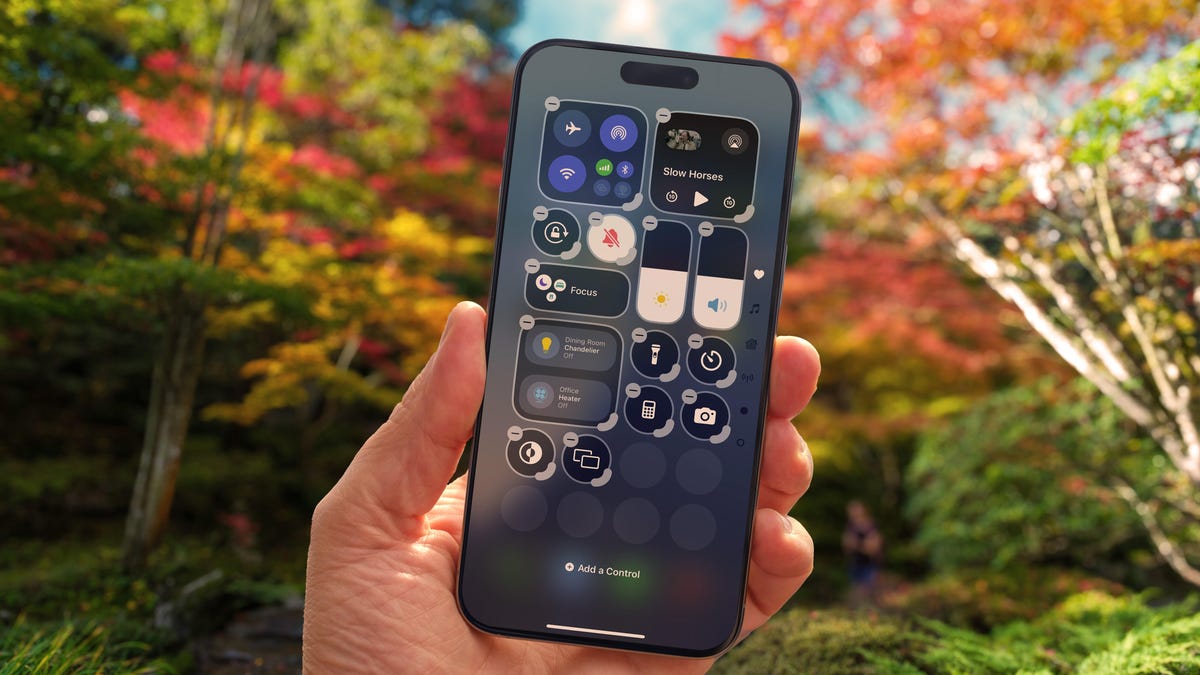
Still holding out on the inevitable update to iOS 26? You’re not the only one; you’ve likely seen chatter about reports of severe battery drain and the overall disappointment with the new Liquid Glass design. Apple is clearly aware of the friction, as shown by its ongoing development of the iOS 26.2 beta. For those of us committed to the stability and performance of iOS 18, there’s no reason to rush to install an OS that’s unfamiliar.
If your iPhone is still running on iOS 18 and you’re determined to maintain peak performance without touching the newer OS, you’re in the right place. I’ve compiled 10 iOS 18 tweaks that can enhance your device’s performance. Implementing these adjustments is remarkably simple, requiring as little as one minute per change.
Before you consider an upgrade that could introduce lag or instability, optimizing your current OS is the best strategy. By using and modifying these lesser-known settings, you can ensure your iPhone runs smoothly and efficiently, getting the maximum performance from an OS you’re familiar with.
Don’t miss any of our unbiased tech content and lab-based reviews. Add CNET as a preferred Google source.
Turn off categories in the Mail app
With email, everyone has their own way of dealing with the influx of messages. Traditionally, the Mail app has kept a chronological list, but that can get unwieldy if you also get scores of promotions, receipts and other types of email. The new categories feature creates virtual buckets for Primary, Transactions, Updates and Promotions, and guesses how your messages should be sorted.
If that approach doesn’t work for you, here are two things to try.
• In the event that categories are somewhat useful, but you still want a chronological view of your Inbox, swipe all the way to the right of the categories and tap All Mail.
• To turn off categories altogether, tap the three-dot menu (…) in the top-right corner, and then tap List View.
Change the default buttons on the lock screen
In real estate, location is everything, and the bottom corners of the iPhone lock screen are the prime spots. Each is an easy thumb press away when your device is still locked. Before iOS 18, those posts were held by the flashlight and camera buttons, and there was no way to change them.
In iOS 18, you can finally replace them with other buttons — or remove them entirely, a balm for folks who unknowingly activate the flashlight (believe me, there’s a better way to turn it on). You can add buttons to recognize music via Shazam, enable Dark Mode, set an alarm/timer, enable Airplane Mode, open your Wallet, send money via Tap to Cash and more.
Here’s how:
1. On the iPhone’s lock screen, touch and hold anywhere on the display until you see the Customize button. You’ll need to unlock the phone using Face ID, Touch ID or your passcode. If it opens the home screen, swipe down from the center top of the screen (not the right edge, which brings up Control Center).
2. Tap Customize and then choose Lock Screen.
3. Remove one of the buttons by tapping the – (minus) button on the icon.
4. To replace the button with another function, tap its space (now with a + icon) and then choose the one you want on the next screen. (You can also opt to leave that space empty with no button.)
5. Repeat those steps for the other button if you want to change it.
6. Tap Done when you’re finished.
7. Tap the lock screen again to exit the customize mode.
Get important alerts using Prioritize Notifications
For iPhone models that can run Apple Intelligence, a new option introduced in iOS 18.4 is fast becoming one of my favorite AI features. Go to Settings > Notifications, and under Apple Intelligence, tap Prioritize Notifications. As new alerts come in — and some days feel like they arrive in floods — Apple Intelligence determines which ones are more likely to be important to you. For example, texts from people in your contacts could be flagged in favor of random scam messages. On that settings screen, you can enable or disable priority notifications for individual apps.
Set up some of the new tasks available on the Action button
The Action button on the iPhone 15 Pro, iPhone 16, iPhone 16E, iPhone 16 Pro and the iPhone 17 line replaced the dedicated mute switch found on every earlier iPhone model with a configurable control. By default, it serves the same purpose — hold it to turn Silent Mode on or off — but you can configure it for other actions like opening the Camera app, performing multiple actions at once or even ordering coffee. The iOS 18.4 update added Visual Intelligence as an option for the Action button. That makes the AI technology available on the iPhone 16E, which does not include the novel new Camera Control but is now an option for any iPhone with an Action button.
In iOS 18, the Action button gets new capabilities. You can bypass Control Center and choose a control, such as opening the Remote interface for navigating Apple TV or using Shazam to identify a song.
To choose a different action for the Action button, go to Settings > Action Button. Swipe sideways to select and activate one of the available actions. For the Controls, Shortcut and Accessibility options, tap the Choose button to pick which specific action to run.
Give your home screen a radical new look
You wouldn’t think that putting icons where you want is a radical new feature, but that’s because iOS has always had a locked arrangement. Apps get added from top to bottom, left to right. You could rearrange the order in which icons appear and move them to other screens, but that was about it.
In iOS 18, apps can be positioned nearly anywhere. You no longer need to deal with a wallpaper image of your kids or pets being obscured by icons. They still adhere to a grid — Apple isn’t about to sanction anarchy — but can be placed freely.
Also, Dark mode finally applies to all of the iPhone’s home screen, with options for coloring icons and affecting the brightness of the wallpaper image. Here’s how to customize the looks.
Arrange apps: Touch and hold the home screen to enter «jiggle mode,» and then drag the icons to new positions. It will still slide them around to fill spaces, but with patience, you can move them into the spots you want.
You can also quickly turn compatible apps into widgets that display more information. Maps, for instance, can be a map of your current location with shortcut buttons to search for places or bring up a list of nearby places (such as dinner spots). Touch and hold the app icon and look for a row of resize buttons in the menu that appears. Once expanded beyond the standard icon size, you can drag the handle in the bottom-right corner of the new icon. To get it back to its single icon size, you need to touch and hold again and choose the single-icon button
Set Dark mode: If you’ve ever subjected yourself to the retina blast of black text on a white background late at night in a darkened room, you will appreciate the new Dark mode option for the home and lock screens. iOS has previously included a Dark mode, where light backgrounds switch to black or dark gray, text switches to white or light gray and other interface elements are dimmed to coexist in a dark environment. That’s never been applied to the home and lock screens in any significant way — only the dock and some widgets — until iOS 18.
First, touch and hold the home screen to enter jiggle mode. Tap the Edit button in the top-left corner and choose Customize from the menu. At the bottom of the screen, choose a mode for the icons and background: Automatic, Dark or Light (I’ll get to Tinted in a moment). In Dark mode, the icons gain black backgrounds, and folders and the Dock become dark gray. (Developers have the option of making Dark mode icons for their apps. In the meantime, apps not yet optimized get a generally darker appearance.)
In Dark mode, the background image also changes. Apple’s default iOS 18 wallpaper dynamically changes from light to dark as the day progresses, or you can choose colors that offer a light and dark option. If you use a photo, its overall exposure is reduced to dim the light output.
If you want dark icons but aren’t a fan of the dimmed photo treatment, tap the sun icon in the corner of the options sheet at the bottom of the screen to toggle back to Light mode just for the background.
Tinted icons: A new and different option is to tint all of the app icons so they share the same color. In the Customize options at the bottom of the screen, choose Tinted as the icon style. You can then adjust the Hue (the slider with the color spectrum) and Luminosity (the slider with the dark to light range) to choose the color tint you prefer.
What if you want to match a color from a background image? Tap the eyedropper button and then drag the reticle to pinpoint the color you want — the border indicates the selected color.
The tint is applied not only to icons but also to widgets. For a widget such as Photos, the images it displays show up as duotones to match the theme.
Large icons: Do the labels below each app icon seem redundant? Now, you can remove them and increase the size of the icons with one setting. Open the Customize options as described above and tap the Large button.
After making any of these changes, tap anywhere on the screen to apply them and exit the Customize interface.
Change up how the Control Center looks
Control Center was once a convenient place to quickly access controls such as playback volume and Airplane mode, but under iOS 18, it’s a configurable playground. You can position controls where you want, resize many to reveal more information and add new controls on multiple screens.
Swipe down from the top-right corner to reveal the Control Center (or swipe up from the bottom on the iPhone SE). To enter edit mode, touch and hold or press the + button at the top-left corner.
Just as with moving apps, drag a control to another slot on the screen to reposition it. Many of the controls also include a bottom-right handle that can resize the control — in most cases, it reveals the name of the control and its current status (such as Flashlight Off).
The Control Center also now spans multiple screens. Swipe up to view controls for currently playing media, Home controls for smart lights and appliances and a page dedicated to the communication options that appear when you long-press the Connectivity block containing Airplane Mode, Wi-Fi, Bluetooth, Cellular and others. Look closely, and you’ll see that those screens are actually individual controls expanded to occupy the entire Control Center area.
You can rearrange the order of those screens by moving their controls. Suppose you want Home controls to be the first swipe instead of Now Playing: In the editing mode, drag the large Home control up to the previous screen (Now Playing will shift to the right to make room).
To remove controls, tap the – (minus) button that appears. You can also add other controls: Tap Add a Control and scroll through the available options, ranging from starting a Screen Recording to a host of accessibility options.
Read more: All the new controls you can add to Control Center
Lock or hide any of your sensitive apps
Our phones carry some of our most sensitive data, and yet it’s not uncommon to hand a phone to a friend to view photos or look up something online. That doesn’t mean they’re going to snoop but it doesn’t not mean they might be more curious than you’re comfortable with. For data you want to ensure stays out of sight or to add a layer of protection in front of sensitive information, iOS 18 adds the ability to lock and hide apps.
For example, let’s say you keep an ongoing set of lists of gift ideas for family members in the Notes app. You can lock individual notes, but that requires a separate step. Maybe a few ideas were made as individual quick notes or drawings. Instead of micromanaging access, you can lock the entire Notes app by doing the following:
Touch and hold the app icon you want to lock and choose Require Face ID or Require Touch ID (or Require Passcode if Face ID or Touch ID are not enabled) from the menu that appears. Confirm your choice by tapping Require Face ID (or similar) in the next dialog.
To remove the authentication step, touch and hold the app and choose Don’t Require Face ID (or similar).
Nothing outwardly indicates that an app is locked — you’ll find out when you try to open it. There’s one more level of app security available, which is to hide apps in a special locked folder. Touch and hold the app and choose Require Face ID and then tap Hide and Require Face ID in the dialog. Confirm the action by tapping Hide App on the next screen.
The app disappears from the home screen and gets slotted into a Hidden folder at the bottom of the App Library (swipe left beyond your last home screen to view the App Library). To access apps there, tap the Hidden folder and authenticate with Face ID.
iOS 18 imposes some limitations on hidden apps. Some, such as many of the built-in ones like Notes or Reminders, can only be locked and cannot be hidden at all. Also, the Hidden folder locks itself when you launch an app or swipe away from the App Library.
Turn off Loop Videos in the Photos app
Many apps have implemented a small but annoying (to me) feature, and now Photos under iOS 18 has it too: Videos automatically replay when you watch them until you tap the Pause button. That can be fun once or twice, or when viewing short clips. I’m not a fan of having to take action to make them stop each time.
Now I can take action once. Go to Settings > Photos, scroll down until you see Loop Videos and turn the option off. A video will play on its own but then stop at the end as it should.
If you’d rather the video didn’t play at all until you tap the Play button, also turn off Auto-Play Motion in the same Settings screen.
Adjust the view of your calendar
Big new features like locking and hiding apps are great additions but so are the tiny changes that you encounter every day. The Calendar app includes two new ways to view your schedule.
In iOS 18, when you’re in the Month view in portrait orientation, pinch with two fingers to view more or fewer details. As you «zoom in,» individual events appear as colored bars and then as labeled events with times, all while keeping the monthly grid of days and weeks.
The Day view, which breaks down your day hour by hour, now has a new Multi Day view that shows two consecutive days to give you context for what’s coming without turning the phone into landscape orientation and viewing the Week view. Tap the View button at the top of the Single Day view and choose Multi Day from the pop-up menu.
Improve movie and TV show dialogue in the TV app
Trouble hearing dialogue in movies and television shows isn’t a new problem — for example, Apple TV has had a feature for a while where you can ask Siri, «What did she say?» and it will automatically back up a few seconds, turn on subtitles and replay that section of the video. You can even buy soundbars that can overcome muffled TV speech. There are a lot of reasons it’s harder to hear dialogue but the TV app in iOS 18 includes a high-tech workaround to make dialog easier to discern.
While you’re watching a video in the TV app, tap the More (…) button and then expand the Audio heading in the menu that appears; if the phone is in horizontal orientation, tap the Audio Adjustments button. Tap Enhance Dialogue and choose Enhance or Boost. They each dampen background noise and raise the dialogue’s audio.
These are just a few selected features and changes in iOS 18. Check out our broader coverage of AI, including Apple Intelligence.
-

 Technologies3 года ago
Technologies3 года agoTech Companies Need to Be Held Accountable for Security, Experts Say
-

 Technologies3 года ago
Technologies3 года agoBest Handheld Game Console in 2023
-

 Technologies3 года ago
Technologies3 года agoTighten Up Your VR Game With the Best Head Straps for Quest 2
-

 Technologies4 года ago
Technologies4 года agoBlack Friday 2021: The best deals on TVs, headphones, kitchenware, and more
-

 Technologies4 года ago
Technologies4 года agoVerum, Wickr and Threema: next generation secured messengers
-

 Technologies4 года ago
Technologies4 года agoGoogle to require vaccinations as Silicon Valley rethinks return-to-office policies
-

 Technologies4 года ago
Technologies4 года agoOlivia Harlan Dekker for Verum Messenger
-

 Technologies4 года ago
Technologies4 года agoiPhone 13 event: How to watch Apple’s big announcement tomorrow

